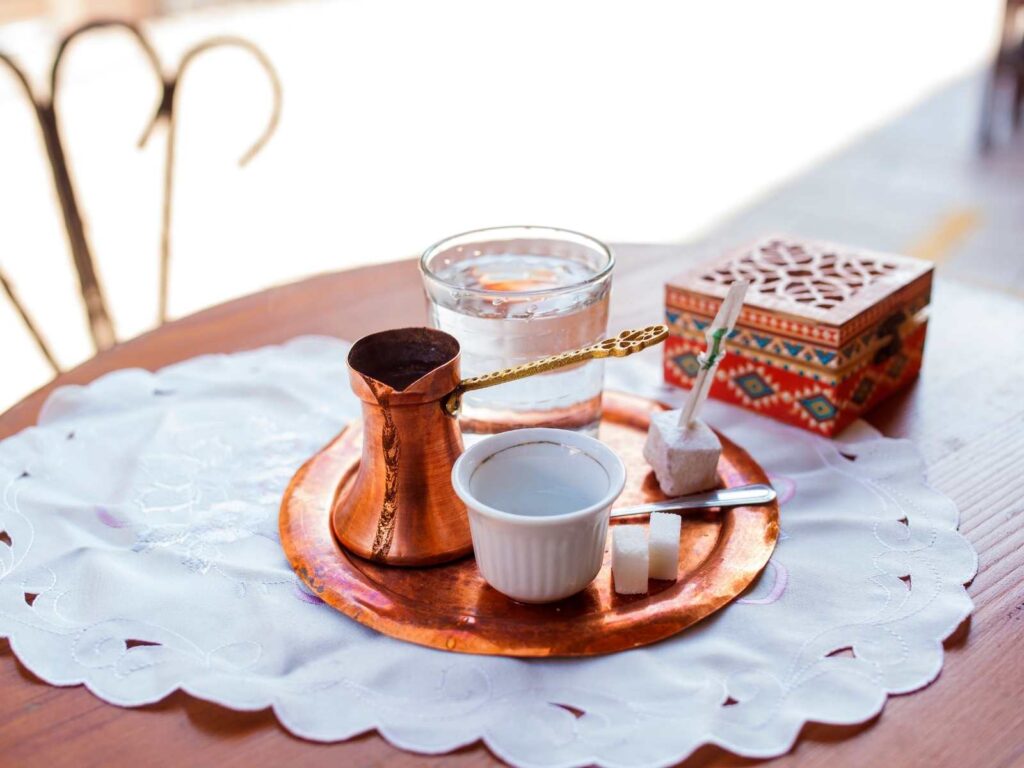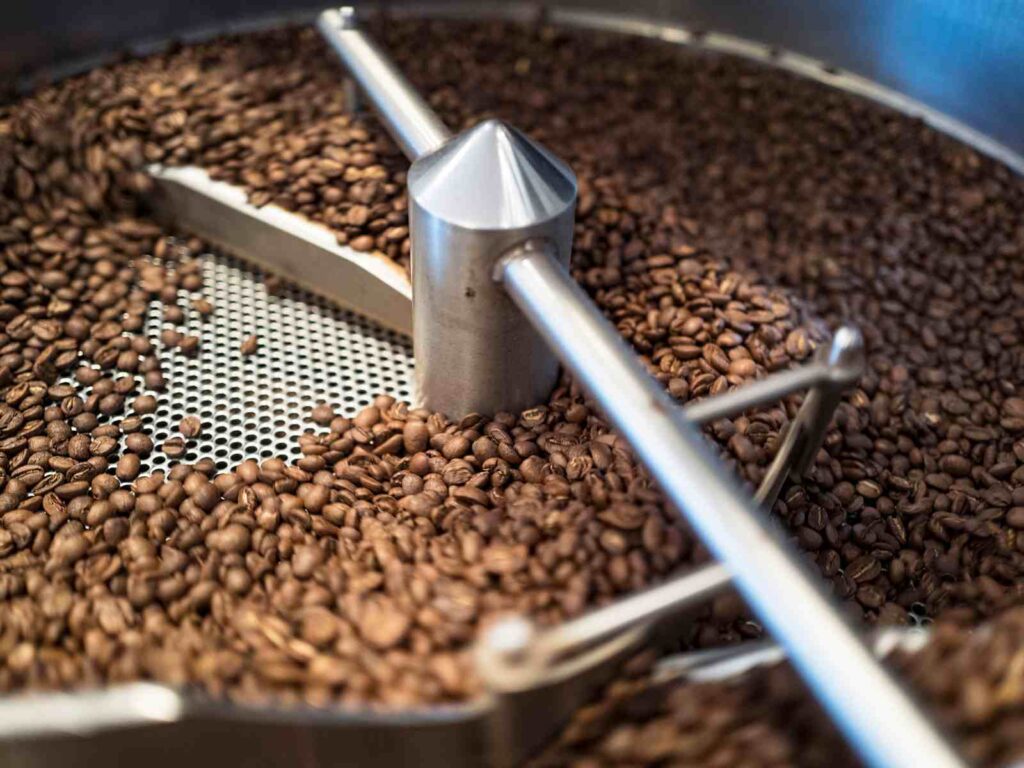Coffee is a beverage made from the ground, roasted seeds of tropical, evergreen coffee trees that are native to Africa. Along with water and tea, coffee is one of the three most consumed drinks worldwide and one of the most valuable commodities on the global market. Although coffee is the base for a plethora of drinks, such as lattes, espresso, cappuccinos, and mochas, its popularity is primarily due to the promoting effect that caffeine, an alkaloid found in coffee, produces.
Origins of Traditional Coffee
In the fifteenth century, wild coffee plants were transported to southern Arabia and planted there; they were most likely from Kefa (Kaffa), Ethiopia. Kaldi, an Arab who was confused by his flock’s odd behavior, is mentioned in a number of traditions regarding the discovery of coffee. The goats were eating from an evergreen bush about 850 CE, and Kaldi is said to have sampled the berries and then, feeling thrilled, announced his discovery to the world.
Throughout the 16th and 17th centuries, coffee was brought to several European nations. There are several reports of its approval or restriction as a political, religious, and health remedy. Coffeehouses went off throughout continental Europe, the British colonies in America, and Britain by the end of the 17th century.

By the 20th century, the Western Hemisphere, and especially Brazil, was home to the largest manufacturing concentration. Industrial roasting and grinding equipment, vacuum-sealed ground roast containers, and green coffee bean decaffeination techniques were developed in the late 19th and early 20th centuries. The perfecting of instant coffee production after 1950 resulted in a rise in the production of cheaper Robusta beans in Africa.
What are the benefits of drinking traditional coffee?
- The large amount of antioxidants in coffee, particularly in green coffee beans, is one of its biggest advantages. Traditional is packed with antioxidants, and it contains a particularly high concentration of polyphenols, which combine with other minerals to support proper cell and body function, fight against disease, and promote overall well-being.
- Caffeine, the ingredient in coffee that stimulates and activates our bodies and thoughts, is rich in coffee. It enhances your memory and other cognitive processes.
- Moreover, traditional coffee raises the metabolism and helps in weight loss. Moreover, it has a lot of antioxidants, vitamins, and minerals that lower the risk of cancer and diabetes.
- As Coffee lowers blood pressure by keeping the veins’ vascular smooth muscles from tightening and constricting. You can add milk in coffee if you are suffering from a headache.

Traditional Coffee Roasting Techniques
The interesting process of roasting coffee involves converting green coffee beans into the satisfying and delicious coffee we drink every day.
Drum Roasting:- Coffee beans are roasted using a classic method called drum roasting, which involves rotating the drum over a heat source. This technique enables consistent roasting and even heat dispersion. The coffee beans in a drum roaster may simply rotate and roast all the way around when the cylinder is positioned horizontally. To roast the beans as they fall over the chamber, the flame (or heat) is typically positioned underneath in drum roasters.

Open Fire Roasting:– Roasting beans of coffee directly over a burning flame is known as “open-fire roasting. This approach, which has its roots in cultural traditions, provides unique flavors depending on the kind of fuel utilized and the fire’s intensity. At this point, the coffee is still roasting and starting to burn more sugars. The first crack is when the real taste of the bean is most noticeable, and as the coffee roasts more, flavor is added by the roasting process itself.
Pan Roasting:- Coffee beans are roasted in a shallow pan over heat; this process is commonly done in small batches. To ensure consistent roasting, this time-consuming process needs to be stirred constantly. By adjusting the temperature and roast time, pan roasting offers the chance to give the beans unique flavors. Preheat the pan to 350°F. After 4–4:30 minutes, increase heat again to 6°F. At 8:30, start rolling the foil and finish roasting at 11:30. Measure out 125g of green beans and preheat a cast-iron pan to 350 degrees. Place the beans in the pan and set the timer. You have to stir constantly in overlapping circles from this point on until the roast is finished.
How to prepare Traditional Coffee?

There are four fundamental steps in the process, while the specifics differ depending on the kind of coffee and the ingredients used. The process involves roasting the raw coffee beans, grinding the roasted coffee beans, and brewing the ground coffee for a predetermined amount of time in either hot or cold water, depending on the method chosen. Next, the extracted liquid coffee must be separated from the used grounds, and if preferred, the extracted coffee can be mixed with additional ingredients to create the desired beverage, such as sweeteners, dairy products, dairy substitutes, or toppings. You can also follow the steps given below:-
- Before putting your 25g of coffee in the dripper, pre-wet (rinse) the filter and vessel with hot water.
- After removing extra water, brew coffee using water that is between 200 and 205 degrees Fahrenheit.
- Pour water into your coffee till 1:30 to 2:15 minutes after letting it bloom for at least 30 seconds.
- Then, let the leftover water drip for another two to three minutes before serving.
Recipes for You
Conclusion
In most homes, coffee has become a daily necessity. This makes a variety of coffee origins more accessible to the average home brewer. Traditional methods are firmly rooted in history and cultural practices. The chosen roasting technique is determined by the intended flavors, the roaster’s level of experience, and particular goals of the coffee roasting procedure. Thankfully, more people are beginning to understand the subtle differences between each coffee origin and the complexity of coffee. Traditional coffee continues to amaze people with its rich taste, complex undertones, and aromatic balance, even for those who do not drink coffee.
How can I prepare simple coffee at home?
Coffee beans should be ground to a medium or medium-fine grain size. Boil filtered water for a minute, then remove from the heat. Fill the filter with enough water to cover it fully, then let the water drip into your cup or coffee maker. Throw away the water.
What is melange coffee?
Melange is frequently left out from menus and orders. This kind of coffee is an espresso with some frothy steamed milk on top. This has a cappuccino-like tone to it. Although it varies a lot, in my experience, the amount of milk used is typically less than that of a regular cappuccino.

